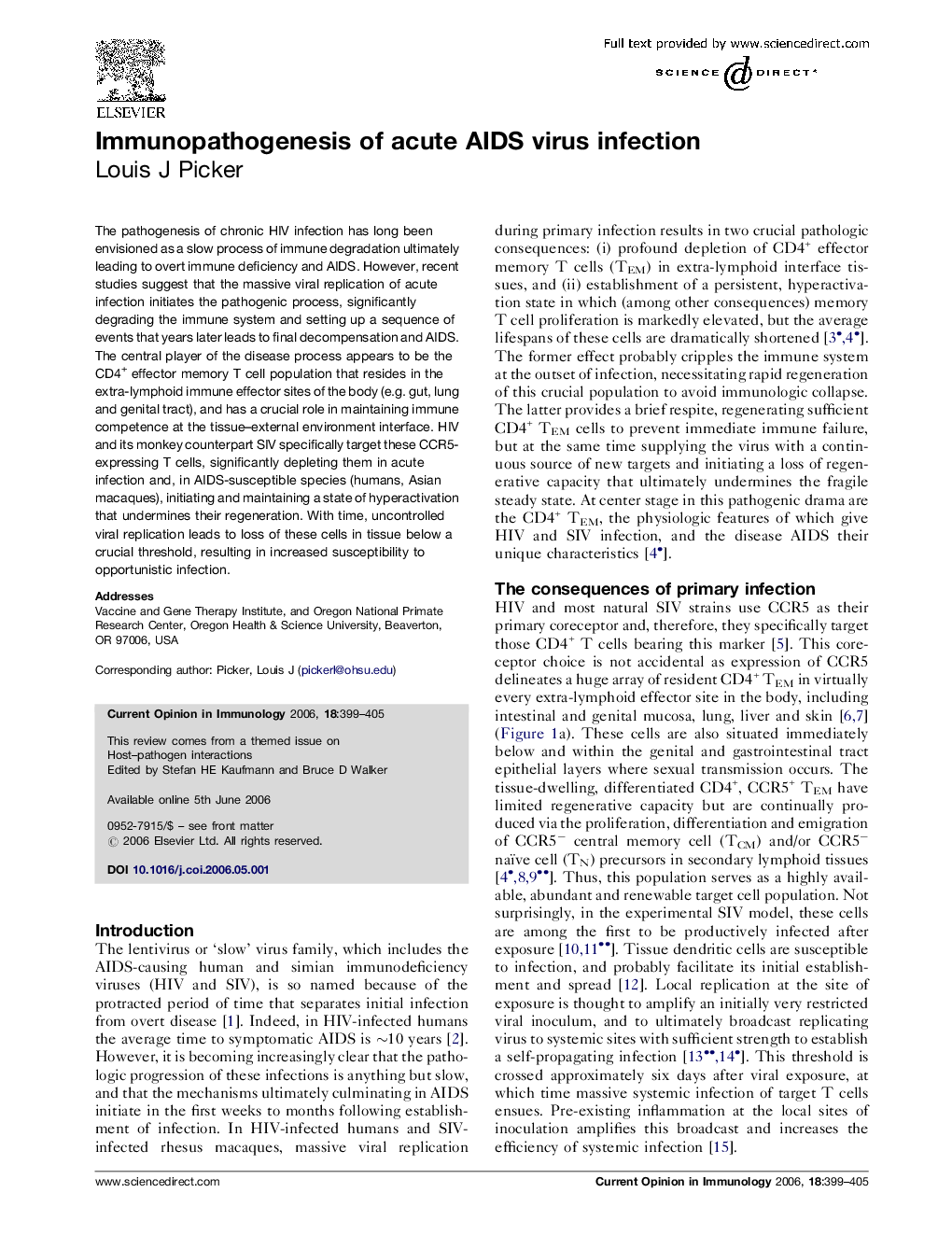| کد مقاله | کد نشریه | سال انتشار | مقاله انگلیسی | نسخه تمام متن |
|---|---|---|---|---|
| 3346709 | 1215808 | 2006 | 7 صفحه PDF | دانلود رایگان |

The pathogenesis of chronic HIV infection has long been envisioned as a slow process of immune degradation ultimately leading to overt immune deficiency and AIDS. However, recent studies suggest that the massive viral replication of acute infection initiates the pathogenic process, significantly degrading the immune system and setting up a sequence of events that years later leads to final decompensation and AIDS. The central player of the disease process appears to be the CD4+ effector memory T cell population that resides in the extra-lymphoid immune effector sites of the body (e.g. gut, lung and genital tract), and has a crucial role in maintaining immune competence at the tissue–external environment interface. HIV and its monkey counterpart SIV specifically target these CCR5-expressing T cells, significantly depleting them in acute infection and, in AIDS-susceptible species (humans, Asian macaques), initiating and maintaining a state of hyperactivation that undermines their regeneration. With time, uncontrolled viral replication leads to loss of these cells in tissue below a crucial threshold, resulting in increased susceptibility to opportunistic infection.
Journal: Current Opinion in Immunology - Volume 18, Issue 4, August 2006, Pages 399–405